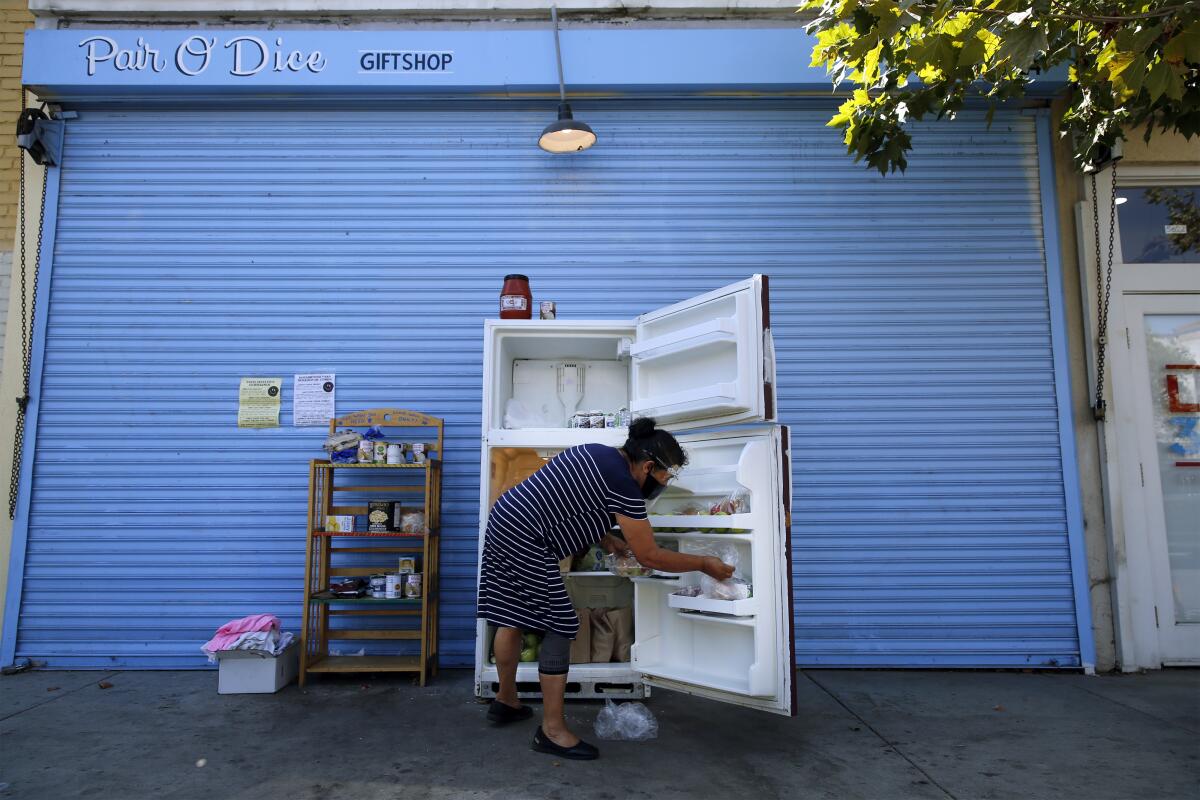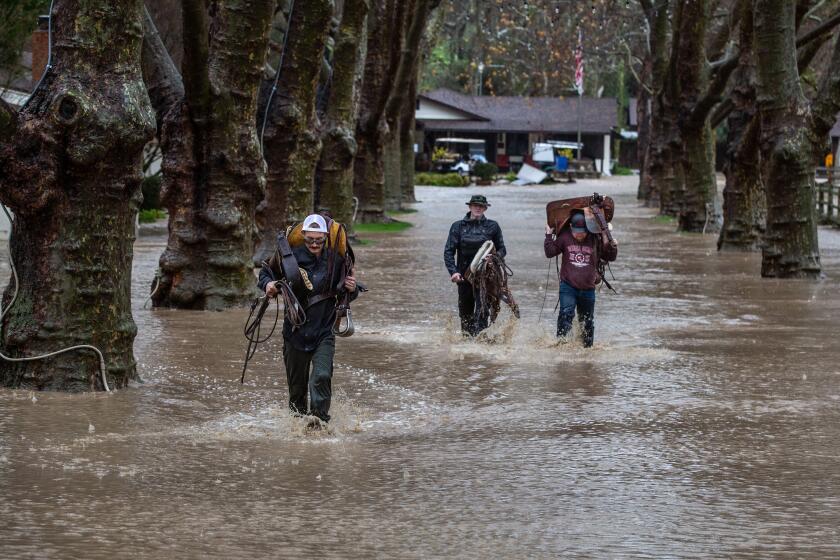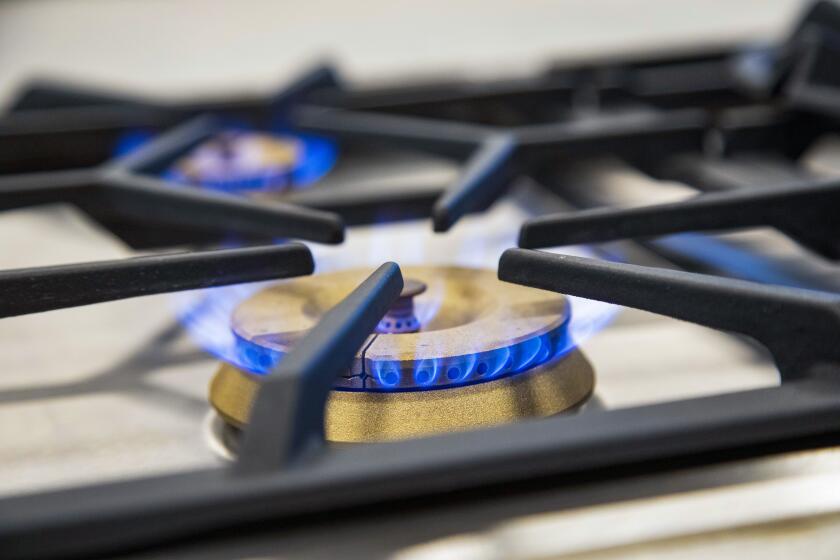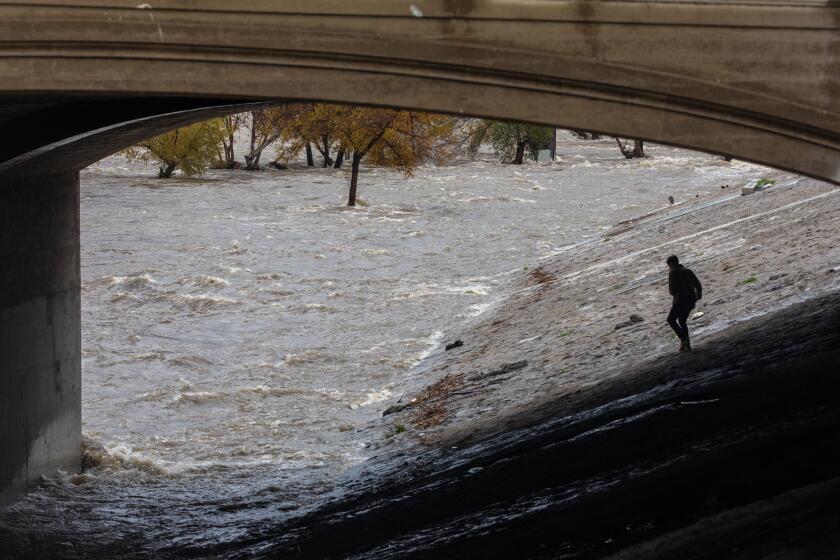Did your food spoil during a power outage? You may be able to get reimbursed. Here’s how

- Share via
When the power goes out, the clock starts ticking on the food in your fridge and freezer.
If you keep the doors closed, refrigerated food can stay at safe temperatures for four hours. The things in your freezer will stay good for 24 to 48 hours. But once food reaches an internal temperature of 40 degrees Fahrenheit for more than two hours, it might be time to toss it.
Tens of thousands of Californians have lost power this week as a result of strong winds and drenching rains. With inflation and the rising cost of goods — $7 for a dozen eggs on average, if you can find them at all — losing a fridge full of food isn’t chump change.
Depending on your utility provider, you may be eligible for some form of reimbursement. Or you may be able to get your losses covered through your homeowners or renters insurance.
Back-to-back storms across California have killed 17, including two motorists who died in a crash, and caused damage that could cost over $1 billion.
Getting reimbursed by the power company
Most Southern Californians are covered by Southern California Edison or San Diego Gas & Electric. In the city of Los Angeles, it’s the L.A. Department of Water and Power. All three utilities allow you to make claims for losses from a service interruption, but generally speaking, you’re eligible for reimbursement only if the loss of power is the provider’s fault.
From SCE’s claims page: “We are responsible for losses that occur due to our negligence. However, in many instances, we are NOT responsible for power outages, voltage fluctuations, food loss, or property damage that occur due to forces outside our control, such as earthquakes and weather-related conditions including wind, rain, fog, lightning, or extreme heat.” And San Diego’s: “We will not be liable for failure to deliver gas or electric service due to circumstances beyond our reasonable control, such as weather conditions.” And in an FAQ, the L.A. DWP says, “Generally, we are responsible for losses that occur due to our negligence.”
In other words: A huge storm knocking out power lines probably won’t qualify.
If you still think you qualify for reimbursement from Southern California Edison, the utility lets customers file claims online or via phone, fax, email and conventional mail. The company’s website notes you should file your claim with one of those methods, not all of them. For claims related to food loss, you’ll need to provide an itemized list of all the spoiled food, with receipts or other documentation of what everything cost. Here’s how to file a claim with Southern California Edison online, and information on how to file it using other methods. You can also call (800) 655-4555.
And to file a claim with San Diego Gas & Electric, you need to download a claim form from its website and send it via email or mail, or call (800) 411-7343.
For the L.A. Department of Water and Power, you can submit a claim online, via regular mail, or by calling (213) 367-4600 or emailing [email protected].
Pacific Gas & Electric, which covers most of Central and Northern California, has a program called “Safety Net” for customers who lose power for more than 48 hours, including if the outage happens because of a storm or other weather-related incident. Qualified customers can expect to receive an automatic payment of $25 to $100 two to four months after the outage, according to the utility’s website. You don’t need to submit a claim to receive a payment under the Safety Net program. If you’d like to file a separate claim with Pacific Gas & Electric, you can do that online here or by calling (800) 743-5000.
With the cost of natural gas skyrocketing, utility bills in Southern California are going to jump. To help manage the costs, SoCalGas offers several programs.
Getting reimbursed by your insurance
Your renters or homeowners insurance could cover spoiled food, including losses incurred as a result of the weather. The precise coverage and steps for filing a claim will vary by insurer; contact your insurance company’s customer service to find out what you need to do. You will probably need to provide supporting documentation such as photos and receipts or other proof of costs.
A post about renters insurance from comparison shopping website Policygenius notes that your renters policy only applies to the policyholder — so your food could be covered, but not your roommate’s.
Industry website Insurance Information Institute says to keep in mind that your losses may not exceed your deductible, so you might wind up paying out of pocket either way (though you’d at least be contributing toward your deductible). And in some cases, more claims could lead to higher premiums —”in the eyes of your insurance provider, a history of claims increases the chances you’ll file another one,” according to a post from LifeHacker, though a single claim over moldy food is very unlikely to be the sole cause of an increase.
Depending on your policy, you may be eligible to reimburse other expenses if you have to evacuate your home, or if you incur costs such as a hotel room or going out to eat because you couldn’t stay or cook at home due to storm damage. Check your individual policy for details.
Before heavy rain, power outages, evacuations or other dangerous conditions, prepare yourself, your home and your family. Here’s what you should know.
About The Times Utility Journalism Team
This article is from The Times’ Utility Journalism Team. Our mission is to be essential to the lives of Southern Californians by publishing information that solves problems, answers questions and helps with decision making. We serve audiences in and around Los Angeles — including current Times subscribers and diverse communities that haven’t historically had their needs met by our coverage.
How can we be useful to you and your community? Email utility (at) latimes.com or one of our journalists: Jon Healey, Ada Tseng, Jessica Roy and Karen Garcia.
More to Read
Sign up for Essential California
The most important California stories and recommendations in your inbox every morning.
You may occasionally receive promotional content from the Los Angeles Times.














